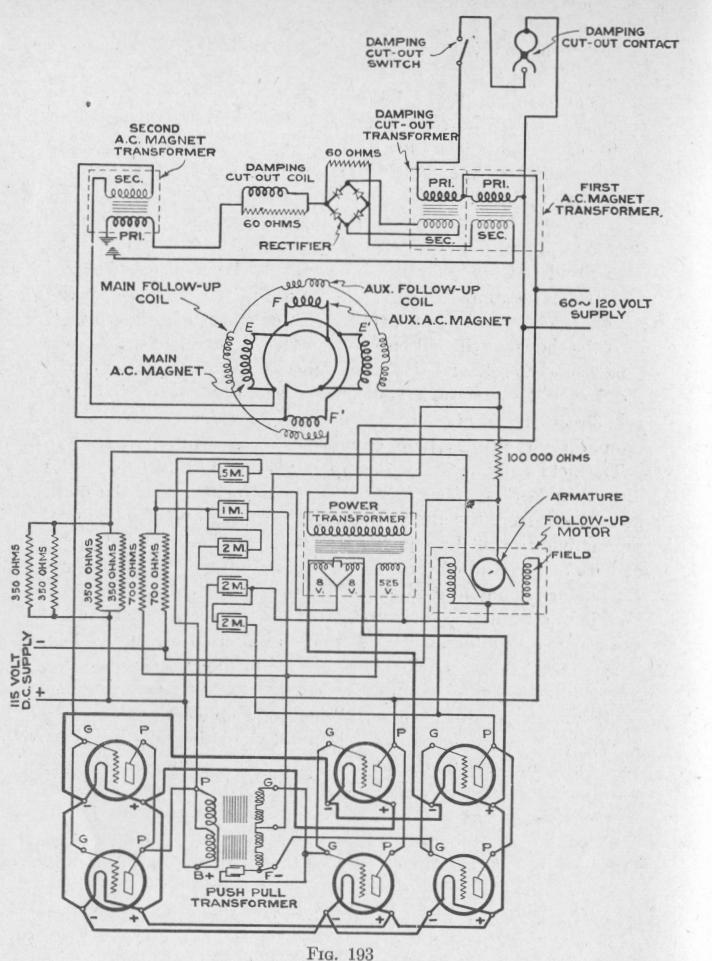NAVIGATIONAL COMPASSES
THE ARMA GIRO-COMPASS 241
I
turn the phantom element till the intersections of the three pairs of follow-up control coils are opposite the corresponding alternating current control magnets. When the ship changes course in the opposite direction, the follow-up motor rotates in the opposite direction thereby again bringing the phantom with the connected compass card into coincidence with the sensitive element.
The pair of horizontal follow-up control coils BB' are of larger diameter and are separated by a wider gap than the two pairs of vertical follow-up control coils C and C'. When the north-south line of the compass card and the connected phantom element are displaced through a considerable angle from the meridian-seeking axis of the sensitive element, the small vertical follow-up control coils will be beyond the range of induction of the follow-up alternating current magnets, but an alternating current will be induced in the large follow-up control coils. This current will cause the follow-up motor to turn the phantom element till the small vertical follow-up control coils are so close to the corresponding alternating current magnets that currents will be induced in their coils also. This action results in the phantom element being turned till the north-south line of the compass card is parallel to the meridian-seeking axis of the sensitive element. The large horizontal follow-up control coils produce a coarse adjustment, and the small vertical follow-up coils furnish the fine adjustment.
Geared to the follow-up system is the transmitter system for the operation of repeater compasses, course recorder and automatic pilot. Also geared to the follow-up system is a device that makes the proper correction for the course and speed error.
144. The Course and Speed Error Corrector. - The gyrocompass on a moving ship is subject to an error which depends upon the latitude and upon the meridian component of the velocity of the ship (Art. 111). The compass is deflected toward the west when the meridian component of the velocity of the ship is directed toward the north, and toward the east when the meridian component is directed toward the south. This error is called the meridian-steaming error, the north-steaming error, and also the course and speed error. The method used in the Arma compass to correct this error consists in setting the phantom element so that the line joining two diametrically opposite follow-up coils makes with the line joining corresponding alternate current control magnets an angle equal to and in the same direction as the deflection of the sensitive element due to the course and the speed of the
